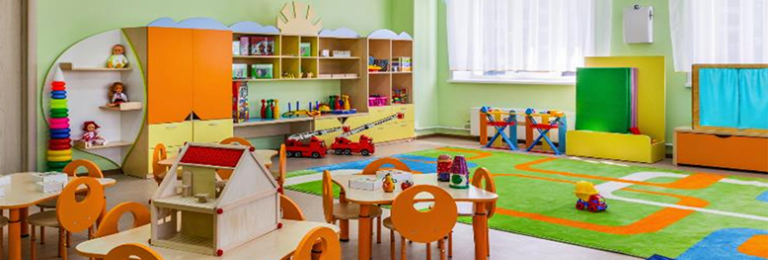What is a quality physical activity experience in an early years setting?
A quality physical activity experience for children in an early years setting has many components and can take many forms. From engaging in free-play to educator-directed activities, physical activity experiences should be varied and numerous throughout the day. Below we explore in brief what these moments may entail and how an early years provider can facilitate a quality process.
Organized activity
In order to engage in a quality experience, the experiences first need to be organized. Early years providers are often referred to as the gatekeepers to physical activity due to the impact their decisions around activity have on whether children have ample time to participate or not. Organized activity can involve creating an invitation to play or a more intentional game. The use of games, music and fundamental movement skills are key elements to include when planning organized activity (Mak, Chan, Capio). During these types of activity, there are characteristics of the play that should be included to maintain the interest of the children.
These include:
- Adaptability - the ability for the game to be modifiable to the ability of the child
- Curiosity - the game should pique the curiosity of the child through unique stories, equipment and interactions
- Fantasy - games should involve imagination and fantastical notions. This may be something like pretending to be animals.
- Interactivity - interaction between the child and another child, or between the child and a piece of equipment/environment
- Challenging - each child should be challenged to an appropriate level.
Adult behaviour
Research has shown that children have a higher level of physical activity in environments that support active play using positive prompts and adult role modelling (Bower et al). In addition, children have been shown to engage longer in physical activity when an adult is engaged with and actively supervising an activity. Active supervision can involve moving with the children, but also providing ideas and suggesting more challenging options for the children participating.
Equipment
Finally, the equipment that is available for children to interact with is important. There is a high correlation between equipment, specifically equipment that is able to be moved and manipulated, and a high level of child physical activity (hubert). There should also be a high ratio of equipment to children so that each child can have their own piece. Additionally, equipment should vary in size, shape, weight, colour and texture.
Through these simple components, children are more likely to engage in physical activity for more prolonged periods, increase their rate of moderate to vigourous activity and choose to be active again at another time.
Source: Chris Wright
